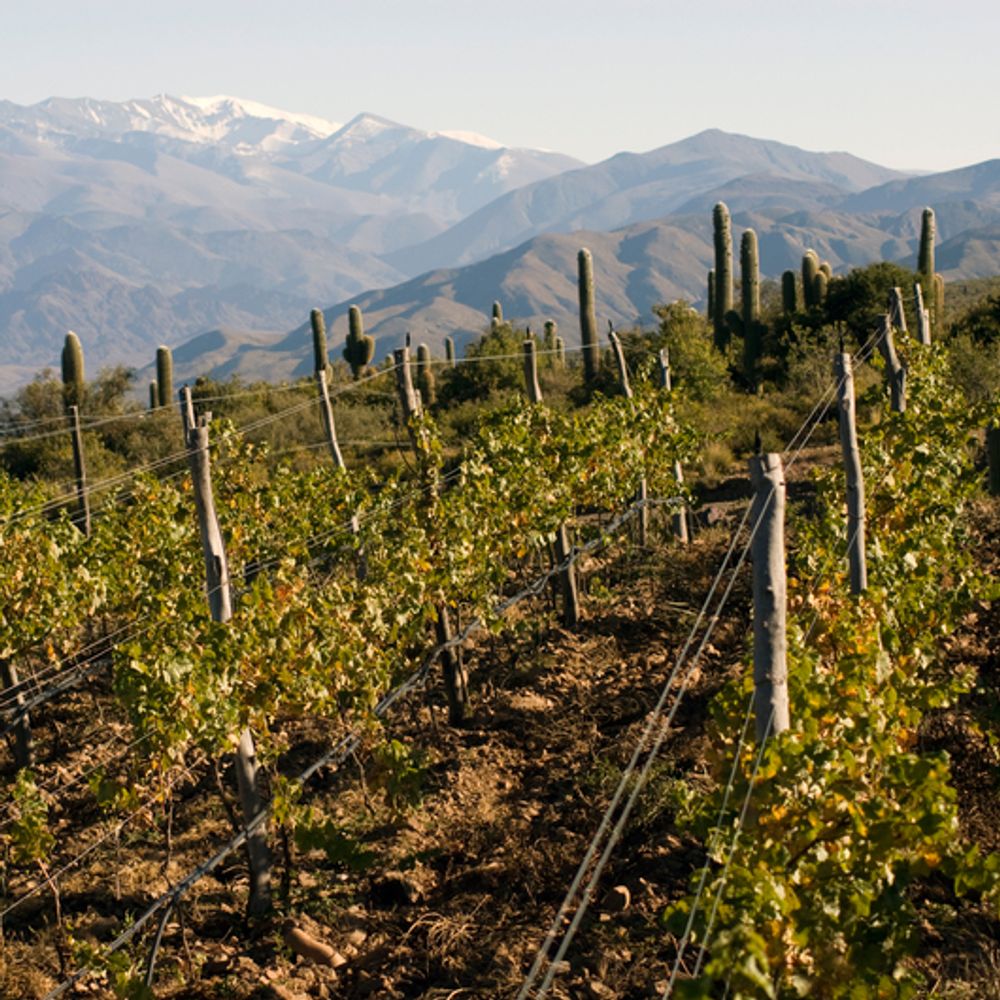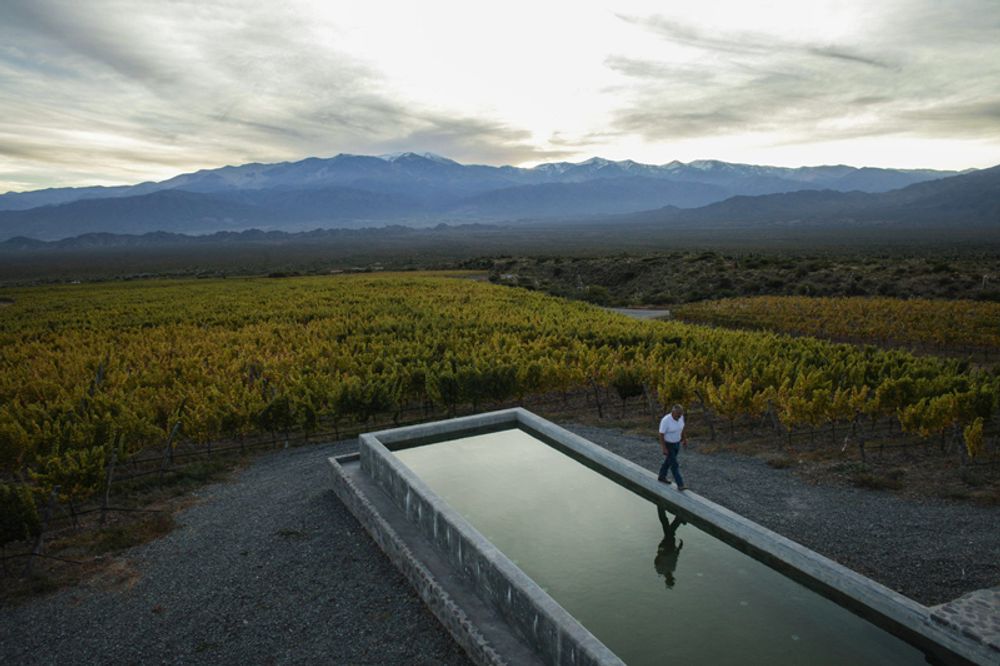Making wine at the top of the world is an everyday delight for French winemaker, Thibaut Delmotte, who works with vines grown at 3,000m to produce Altura Maxima for Colomé, part of Hess Family Estates.
So remote is the area in northern Argentina, where the vines that can officially claim to be the highest in the world are situated, that the worker tasked with looking after them on a daily basis has been nicknamed “the Revenant”. For all he has for company are mountain goats and he has to get by living in a mountain hut with no electricity or heating. Give that man an Oscar!
But his efforts, along with chief winemaker, Thibaut Delmotte, are worth it, for this is no gimmick. The world’s highest vineyard is producing award winning wines that the likes of Gaucho are only to pleased to have on their lists.
For this is no normal run of your mill Malbec or Argentinian wine made on the flat lands of Mendoza. This is wine made like nowhere else in the world. Literally.
If you take out your map of Argentina and look up near the top and find the city of Salta. Then travel some 170km to the south and end up in the mountains surrounding the Calchaqui valley then you are on your way to tracking down the Altura Maxima vineyard.
The reason there are vines there at all is down to the vision and commitment of Swiss wine entrepreneur Donald Hess and his desire to make a wins he believes are the ultimate expression of what Argentina can produce.
It is not as if he needs to go to all this effort. The Hess family already owns hugely successful wineries around the world including Napa Valley, Sonoma and South Africa.

The highest vineyard in the world
So what is like making wine from such a vineyard? French winemaker, Thibaut Delmotte, explains: “Every day is a different challenge. A different adventure. We only get a small crop. So we have to make sure we look after the vines.”
He adds: “What I have learnt as a winemaker in France I have had to relearn here. What I have been able to take from my time in Burgundy and Bordeaux is the importance of looking at soils. The terroir. Here it is very different. The fruit is so expressive and you have dry tannins and very low extractions. There is also very little intervention in the winemaking. It is about what you do in the vineyard, not what you do in the winery.”
He has certainly put his heart and soul in to the project. For rather than take the easy option and make wine in Burgundy or Bordeaux he became transfixed by the way of life in rural Argentina. So much so that 12 years later he and his local Argentine wife and children are very much part of the 400-strong Colomé community which lies further down the valley from the Altura Maxima vineyard.
“I love it there. Life is very simple and very special,” he says.
Unique opportunity
His initial motivation for coming was simple enough. “I wanted to have the chance to make wine and work with different terroirs at different altitudes. It really is unique here and for a winemaker that is very exciting.”
Delmotte clearly loves the challenge every day throws up. He is also aware that the natural grape growing conditions at Altura Maxima are a dream for a winemaker. By being so high it means the grapes enjoy the perfect combination of cool nights, that allow them to breathe and relax, and warm, but not too hot nights. It results in grapes packed with intense fruits, but also lots of acidity so that they tingle with freshness in your mouth.
Very hard to achieve, but a characteristic that comes naturally to the high altitude vines of Altura Maxima.
“We have the tools to make the best Malbecs possible in Argentina there,” he adds.
Colomé wines

Colome is where Altura Maxima is made
Donald Hess has already made a name for himself in Argentina with his Colomé winery project. He first came to Colome in the mid 1990s in search of land that could produce wines that would be an alternative to to the already highly competitive Mendoza region. He bought the Colomé winery in 2001 and has not looked back.
He built on the success of Colomé by taking over a bigger facility in Cafayete, the Altamaya winery, in 2010 having bought its vineyards in 2008. Together they produce 2 million bottles a year, with 1.2m coming from Amalaya and 800,000 from Colomé. A healthy proportion of which makes its way to Liberty Wines to sell in the UK.
Perhaps one of Delmotte’s more unusual wines is his Riesling and Torrontes blend. But for him they are a natural fit. “They work the best together. We have tried Torrontes with Sauvignon Blanc and Chardonnay and neither were as successful as the Riesling. I did not think it would work but we picked very early at the end of January, early February. It just gives you that extra freshness and minerality, which balances the fruit and aromas of he Torrontes.
Delmotte also enjoys trying to find new ways to evolve what was once one of France’s most historical grapes, but which has made its name in Argentina. Malbec.
“I think it has found its true place here in Argentina. Malbec from Cahors is just so much more tannic. Also remember Argentina has made Malbec sexy. It was not 15 years ago. Even in Argentina people drank more Cabernet Sauvignon. It was consultants like Michel Rolland and Paul Hobbs who brought the market for Malbec.”
He adds: “We have the tools to make the best Malbecs possible in Argentina there.”































